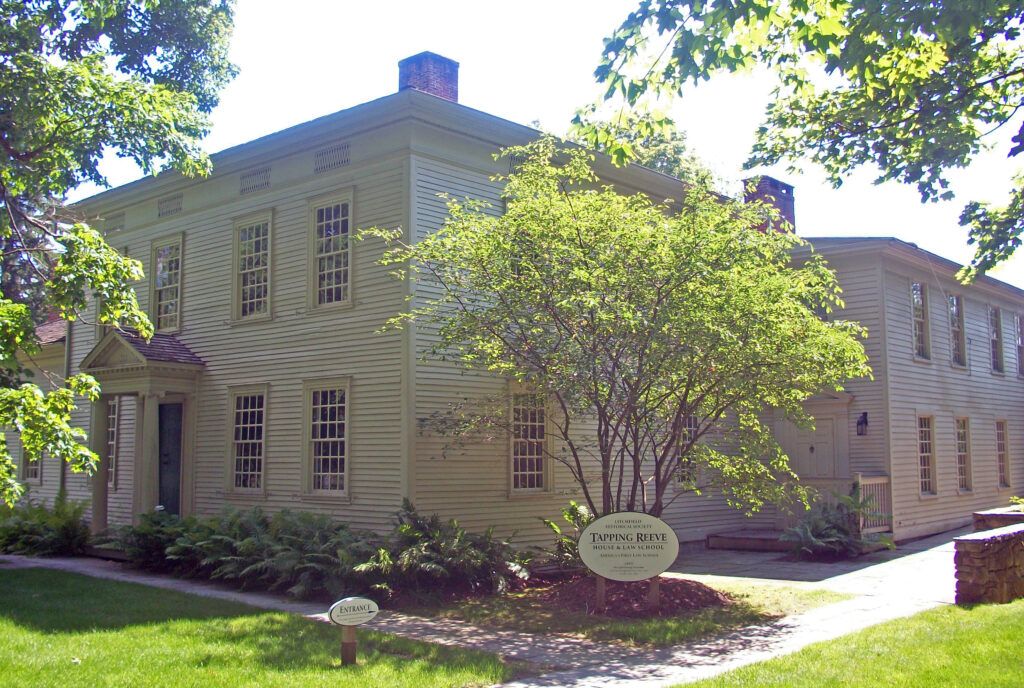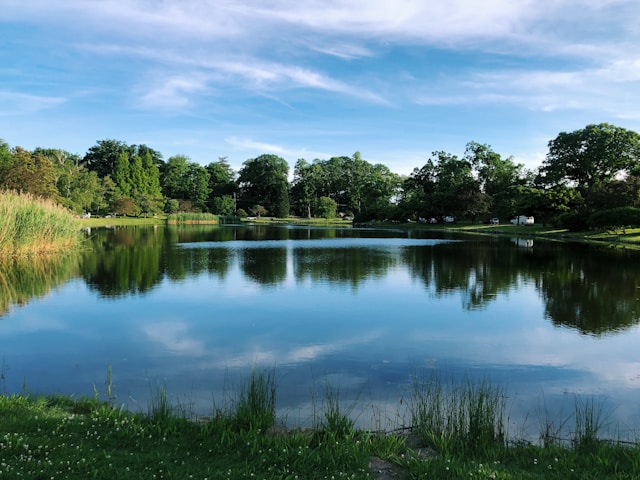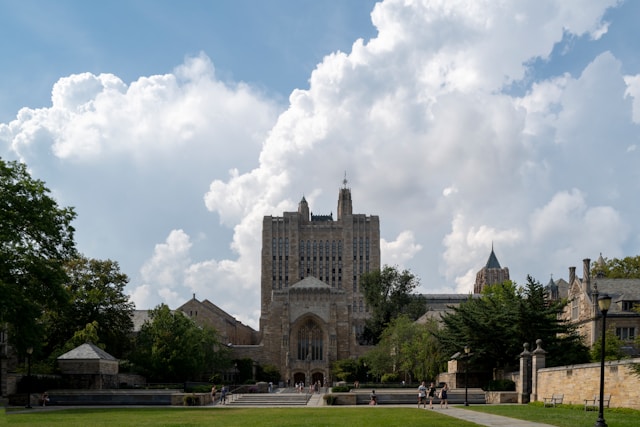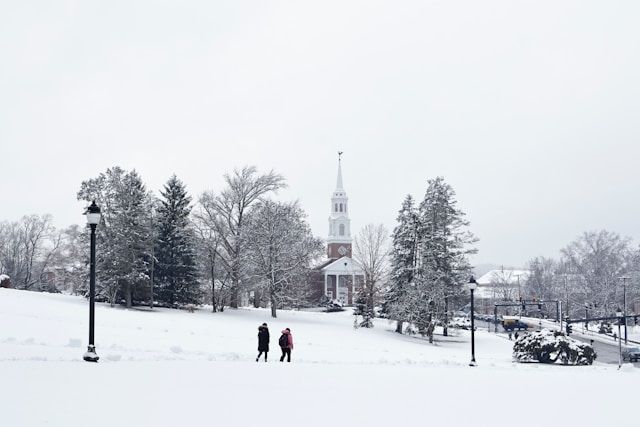
The Tapping Reeve House and Law School in Litchfield, Connecticut represents a remarkable piece of American educational history tucked away in a charming New England town. Started in 1774 by lawyer Tapping Reeve, this institution holds the distinction of being America’s first independent law school. When you visit this historic site, you’ll step back in time to experience 19th-century education through interactive exhibits and role-playing activities that bring the past to life.
Today, the original house and one-room schoolhouse are preserved by the Litchfield Historical Society, offering you a glimpse into the lives of the nearly 1,000 students who studied there. The site celebrates both the Law School and the nearby Litchfield Female Academy, telling stories of travel, communication, education, and community during America’s early years. You can tour this fascinating landmark from mid-April through November, and best of all, admission is free.
Find available hotels and vacation homes instantly. No fees, best rates guaranteed!
Check Availability Now
Tapping Reeve House and Law School
The Tapping Reeve House and Law School is a remarkable piece of American history right in the heart of Litchfield, Connecticut. As the nation’s first law school, it transformed legal education in America between 1774 and 1833 under the leadership of Tapping Reeve and James Gould.
When you visit, you’ll be immersed in 19th-century student life through role-playing activities and hands-on exhibits. You can try on period clothes, make decisions about student supplies, and even vote on historical issues of the day—making history come alive for visitors of all ages.
The school’s legacy is truly impressive. Its graduates went on to become influential leaders, including 2 vice presidents, 101 U.S. congressmen, 28 senators, 3 Supreme Court justices, and 14 governors. These students played crucial roles in shaping American democracy as the sons and grandsons of revolutionary leaders.
The museum reopens for the season on April 19, 2025, and offers a special treat—free admission for all visitors! You can also purchase a walking tour map for $2 to explore the historic district on your own, or download the digital version for free.
Rating: 4.8 (38 reviews)
Location: 82 South St, Litchfield, CT 06759
Contact: (860) 567-4501
Website: Visit Website
Historical Significance of Tapping Reeve House
The Tapping Reeve House stands as a landmark in American legal education, representing the transition from apprenticeship learning to formal legal instruction in the United States. This modest home in Litchfield became the birthplace of systematic law education that would influence generations of legal minds.
Founding of the Law School
Tapping Reeve settled in Litchfield in 1773 with his wife Sally Burr Reeve. His journey into teaching began simply—in 1774, he started giving law lessons to his brother-in-law, Aaron Burr, who lived with the couple. What began in the parlor of his home soon attracted more students seeking legal knowledge.
By 1782, Reeve was regularly conducting lectures in his home. The growing number of students quickly made it clear that a larger space was needed. In 1784, he officially established the Litchfield Law School and built a one-room schoolhouse next to his residence to accommodate his expanding classes.
This humble beginning marked America’s first formal law school, transforming how lawyers were trained in the new nation.
Impact on American Legal Education
The influence of Tapping Reeve’s school on American jurisprudence can’t be overstated. Nearly 1,000 students received their legal education at Litchfield Law School over the decades of its operation.
When you visit today, you can explore exhibits that bring to life the 19th-century educational experience through role-playing and hands-on activities. You’ll discover how Reeve developed a structured curriculum that replaced the traditional apprenticeship model with systematic classroom instruction.
Many graduates went on to significant roles in American government and law. The school produced two Vice Presidents, 101 members of Congress, 28 U.S. senators, and numerous judges and state officials who shaped early American legal thought.
Reeve himself became Chief Justice of the Connecticut Supreme Court in 1814, further cementing his legacy in American legal history.
Architectural Features of the Tapping Reeve House
The Tapping Reeve House stands as a remarkable example of colonial architecture that has withstood the test of time since its construction in 1773.
Preservation and Restoration Efforts
The Tapping Reeve House has been carefully preserved to maintain its historical integrity. When you visit, you’ll notice the classic colonial design with its symmetrical façade and traditional New England styling. The house features original woodwork that craftsmen have meticulously maintained over centuries.
Inside, you’ll find period-appropriate furnishings that recreate the atmosphere of when Tapping Reeve taught law from his parlor. The Historical Society has done an outstanding job restoring rooms to their late 18th-century appearance.
The property includes both the main house and the one-room schoolhouse that Reeve built when his student numbers outgrew his home. This simple yet significant structure represents the birthplace of formal legal education in America.
You can explore these buildings from mid-April through fall each year. The restoration allows you to step back in time and experience the surroundings of America’s first law students.
Life and Legacy of Tapping Reeve
Tapping Reeve transformed American legal education through his innovative teaching methods and commitment to structured legal training. Born in Brookhaven, New York, his career would change how lawyers learned their profession forever.
Contributions to Legal Thought
Tapping Reeve’s approach to teaching law was revolutionary. Instead of the traditional apprenticeship model, he created America’s first independent law school in Litchfield, Connecticut. After graduating from Princeton (then called the College of New Jersey) in 1763, Reeve began teaching law to his brother-in-law Aaron Burr in 1774.
What started as tutoring one student expanded into a formal school by 1782. Reeve built a small one-room schoolhouse next to his home specifically for teaching. His method included systematic lectures on legal principles rather than just practical training.
When you visit the Tapping Reeve House today, you can see where nearly 1,000 students studied between 1774 and 1833. Many graduates became prominent lawyers, judges, and political leaders across America.
Reeve’s legacy lives on in modern legal education. His structured curriculum approach became the foundation for today’s law schools. The Litchfield Historical Society now preserves both his home and the law school building for you to explore.
Find available hotels and vacation homes instantly. No fees, best rates guaranteed!
Check Availability Now









